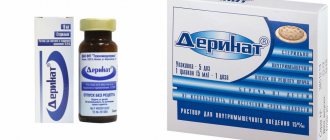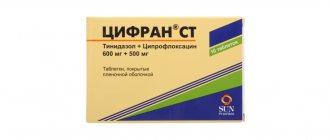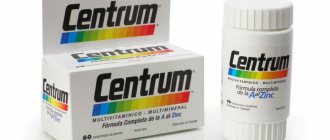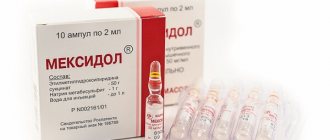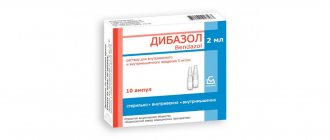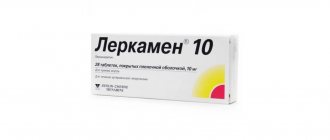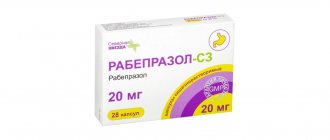Treating ARVI, influenza and other viral infections is usually more difficult than preventing them, especially in childhood. For successful prevention, take drugs with an immunomodulatory effect, for example, Viferon ointment. This is an inexpensive and quite effective drug that can be used not only by adults, but also by newborns, including premature babies.
Ointment "Viferon": composition, description
This is an antiviral drug that strengthens the immune system. The composition contains interferon protein, which belongs to the alpha-2b type. Available in different forms:
- ointment;
- candles;
- gel.
It is used for the prevention and treatment of diseases associated with viruses. Thanks to the destruction of pathogenic microorganisms, patients can use significantly less hormonal drugs and antibiotics, which makes them feel better and has a positive effect on their health.
The effect on the body is complex:
- antiviral – for the treatment of herpes, influenza, hepatitis, among others;
- restoration of the interferon synthesis system;
- antibacterial – treatment of mixed infections;
- stimulation of systems that synthesize antibodies;
- strengthening the immune system.
The drug stabilizes the membranes of body cells, promotes tissue regeneration, and has anti-inflammatory and powerful antioxidant effects. This contributes not only to cure from infectious pathologies, but to relatively rapid recovery.
The ointment or gel can only be stored in the refrigerator at a temperature in the range of 2-8°C. The place should be moderately damp and dark. Access for children is prohibited. The drug can be used within the expiration date, which is 2 years from the date of production.
Contraindications and side effects
The ointment and gel have no contraindications, with the exception of individual intolerance. They should not be used by patients who may experience rashes, redness or other types of allergies. If such consequences occur, therapy should be stopped immediately.
It is necessary to consult a doctor for further advice. Symptomatic treatment is not indicated, since all symptoms disappear within 2-3 days. The standard course duration is 7 days. After this, you can take a break and continue therapy only in consultation with your doctor.
The drug can be used in any form, starting from the 14th week of pregnancy. During breastfeeding, Viferon can be used without restrictions. The ointment and gel are safe for health if the instructions are followed. Cases of overdose have not been registered to date.
Ointment "Viferon": instructions for use
The ointment is used only for external use. The instructions are simple - apply to the affected area of the skin or mucous membrane and gently smear with your fingers. The quantity should be small, the number of doses should be 3-4 per day. Therapy lasts 5-7 days; if necessary, the course can be continued, but only after consulting a doctor.
The gel is used for the prevention of acute respiratory viral infections and stenosing laryngitis in childhood. For these purposes, the composition is applied to a tampon and then transferred to the child’s tonsils 2 times a day. The course lasts no more than a week and can be repeated twice a year.
The gel can also be used to prevent ARVI in children during the first 2 years of life. In this case, the composition is also applied to a tampon, and then the mucous membrane of each nasal passage is coated (blow your nose and dry it first). The procedure is repeated up to 3 times a day for a week.
The gel is also used to treat herpes in adult patients. It is best to use it during periods of low flow, when rashes appear quite rarely. The composition is applied only to the affected areas, and the number of doses is from 5 to 7 in one day. Therapy is continued for 3-5 days, after which they take a break and, if necessary, repeat the cycle.
Viferon in the treatment and prevention of acute respiratory viral infections
AND
interferons (IFNs) were discovered in 1957 by English scientists A. Isaacs and S. Lindenmann as proteins that determine the phenomenon of interference, which consists in the body’s immunity to re-infection with the virus.
Over the half-century history of the development of the doctrine of the interferon system, many important issues of its functioning have been revealed, and nonspecific and specific mechanisms of resistance have been studied in detail. Experimental work has shown that the INF system, which arose in vertebrates during the process of phylogenesis, is involved in ensuring the constancy of the internal environment of the body - homeostasis [1]. INFs are active proteins that are produced by all cells of the body, but 99% of all INFs are produced by blood and bone marrow cells.
Interferons are formed under the influence of the antigenic system, but a small amount of them is produced without the participation of antigens. It is known, for example, that the level of INF is increased in patients with rheumatoid arthritis and systemic lupus erythematosus [2, 3].
The medical significance of INF is determined by their antiviral and immunocorrective activity, as well as antitumorigenic and radioprotective effects.
The interaction of IFN with cells begins with the binding of interferon to specific interferon receptors on the surface of cells. It has been established that different cells are sensitive to different types of interferons [4]. IFN-a and -b have a common receptor on the cell surface, while IFN-g has a separate receptor. Once inside the cell, IFN activates genes encoding effector proteins that are responsible for the antiviral effect. The role of IFN in antiviral protection is confirmed by the presence of a strict correlation between the level of production of endogenous IFN and recovery, aggravation of the severity of the disease when the activity of endogenous interferon is suppressed, and, finally, treatment with interferon helps prevent the development of viral infection [5].
IFNs are divided into three main types: a, b and g. a- and b-IFNs have an antiviral effect, inhibiting the processes of transcription and translation, disrupting the synthesis of viral proteins [6].
Evidence has been obtained of a connection between the interferon system and the immune system: interferons are important mediators of immunity
, which allows them to be classified as a family of regulatory cytokines, stimulates phagocytosis, natural killer cell activity, and enhances the expression of histocompatibility antigens of classes 1 and 2 [7].
The antiviral and immunomodulatory activity of IFN was the basis for the use of interferon drugs in medicine. The most effective for most infectious diseases are interferons-a, which are used very widely in clinical practice. First of all, this applies to second-generation INF - recombinant interferons-a2, obtained by genetic engineering (without the use of donor blood). There are several interferon-a2 preparations: 2a, 2b and 2c.
Interferon preparations are quite effective, but the consequence of the biological processes that IFNs cause in the body are adverse reactions. The most common (with large individual variations) is influenza-like syndrome, observed in almost all patients, especially in cases of high doses of INF. Along with flu-like syndrome, long-term courses may cause serious side effects from the cardiovascular system (hypotension, heart rhythm disturbances) and the central nervous system (irritability, aggressiveness or depression). All this limits the use of IFN drugs, and in case of dangerous side effects requires discontinuation.
The search for new forms of drugs to avoid negative phenomena led to the creation of Viferon
– a new antiviral immunomodulatory drug developed at the Research Institute of Epidemiology named after. N.F. Gamaleya RAMS (produced by Feron LLC, Moscow). In Russia, Viferon was registered and approved for use in 1998. The dosage form is rectal suppositories and ointment.
Mechanism of action of Viferon
Viferon is a complex of recombinant interferon-a2b in combination with antioxidant drugs - a-tocopherol acetate and ascorbic acid in therapeutically effective doses.
In a series of experimental works by V.V. Malinovskaya showed that the ability to produce IFN increases significantly with the addition (in vitro) of α-tocopherol acetate and ascorbic acid, which influence the processes of lipid peroxidation of cell membranes, to IFN-inducing cells [7]. The use of the drug combination effectiveness index formula showed that the use of R-IFNa with antioxidants had a synergistic effect on the antiviral effect of R-IFNa, greatly enhancing the antiviral effect of interferon [8].
A detailed study of the mechanism of action of Viferon revealed its immunomodulatory effect on T- and B-lymphocytes, normalization of humoral immunity, and the content of immunoglobulin E [9]. A clear correlation has been established between various factors of specific, nonspecific and antioxidant protection in the treatment of viral and bacterial infections [10].
A study of the pharmacokinetics of the drug showed that rectal administration of Viferon made it possible to achieve higher concentrations and prolonged circulation of R-IFN in the blood than with parenteral administration [11]. A decrease in the level of serum interferon after 12 hours necessitates its repeated administration.
Side effects and tolerability
Side effects of Viferon were not recorded during the drug trial.
It has been established that long-term use of Viferon does not produce antibodies that neutralize the antiviral activity of R-IFN alpha 2b.
Currently, Viferon is the only drug from the class of recombinant interferons registered in Russia, approved by the State Pharmacological Committee of the Ministry of Health of the Russian Federation for the treatment of various infectious diseases not only in adults, but also in children, including newborns, as well as pregnant women.
Clinical and immunological effectiveness of Viferon
Virus-induced immune dysfunction (T-cell suppression, inhibition of phagocytosis, etc.), which develops with influenza and other acute respiratory viral infections, allows us to classify the latter as one of those diseases, the course and outcome of which are determined by the presence of immune drugs in complex treatment.
In our clinic, over the past years, the clinical effectiveness of Viferon in respiratory diseases and their bacterial complications has been studied. In particular, in an open, placebo-controlled study, we demonstrated high therapeutic efficacy for influenza and other respiratory diseases complicated by sore throat [12]. 54 patients with lacunar tonsillitis and acute respiratory viral disease, confirmed by laboratory methods, were under observation. Reliable evidence has been obtained of the effectiveness of treatment with antibacterial agents in combination with Viferon. The drug was prescribed at a dose of 500 thousand IU twice a day for five days. Treatment was started no later than 48 hours from the appearance of the first signs of the disease. The therapeutic effect was expressed in a reduction in the symptoms of intoxication and the duration of purulent deposits on the tonsils, and a reduction in the duration of the disease in general.
The clinical effect, as a rule, was accompanied by a pronounced improvement in immunological parameters: normalization of initially reduced DM3 and DM4, and a decrease in the number of circulating immune complexes (Table 1). The positive dynamics of circulating immune complexes during treatment with Viferon, from our point of view, is an important criterion indicating the elimination of the pathogen and a reduction in the duration of the disease on the one hand [12].
According to other clinical observations of 137 patients aged 1 to 14 years with severe forms of ARVI, based on clinical follow-up analysis, the authors found that in severe forms of infection, a low initial level of serum IFN and a significant decrease in the total number of T- lymphocytes, decreased activity of phagocytes, which is the basis for prescribing Viferon from 1–2 days of illness to children with severe forms of ARVI.
Follow-up observation of 50 children examined for 3–6 months revealed a protective effect of Viferon against subsequent episodes of ARVI [13]. The authors recommend prescribing the drug to frequently and long-term ill children aged 1–14 years for 5 days, 2 suppositories per day in the following doses: 500,000 IU per suppository for children under 7 years of age, and 1 million IU for children from 7 to 14 years of age , and use it for preventive purposes during periods of high incidence of ARVI and for the adaptation of children in preschool institutions.
Clinical and immunological observations in a group of adults and children who often suffer from viral and bacterial infections of the respiratory tract made it possible to identify disturbances in the interferon system: a decrease in the ability of leukocytes to produce a- and g-interferons. Pronounced changes in the T-cell immune system require the use of adequate doses of Viferon [13,15]. The frequency and duration of course treatment depend on the severity of the disease and the severity of changes in the immune status. As a rule, therapy with Viferon is carried out over several months at an age-specific dosage. Prolonged viferon therapy for 2.5 months made it possible to reduce the incidence of ARVD by approximately 2–5 times per year [13].
Use of Viferon ointment for the treatment and prevention of influenza and other acute respiratory viral infections
Viferon ointment, containing 40 thousand IU of IFN and tocopherol acetate in a therapeutic dose per 1 g, is used at the first signs of the disease intranasally 3-4 times a day for 5 days. For the purpose of prevention in areas of infection, the ointment is applied in a thin layer to the mucous membrane of the nasal passages 2 times a day, morning and evening, throughout the entire dangerous period.
According to the results of the study by E.S. Makarova (2001), conducted in a preschool institution, when studying the interferon status in children from 1 year 7 months to 3 years against the background of the preventive use of Viferon ointment, an increase in the production of g-interferon, a significant decrease in the amount of circulating “early” interferon, and a reduction in morbidity by 4 times, no adverse reactions. The results obtained, according to the authors’ conclusion, indicate the high effectiveness of viferon prophylaxis in frequently ill young children [15].
Thus, convenient dosage forms, high therapeutic and prophylactic effectiveness of Viferon, and the focus of its effect on the immune system make it possible to recommend this drug in the complex treatment and prevention of respiratory infections.
In 2001, work on the creation of new dosage forms of recombinant interferons (including Viferon) and their introduction into clinical practice was awarded a prize from the Government of the Russian Federation.
Among herbal remedies for the prevention of ARVI, preparations such as dry purified extract from the leaves of sea buckthorn of the sucker family are recommended. The drug has antiviral and interferon-inducing activity and is prescribed to adults and children at the first symptoms of a respiratory disease. The most pronounced therapeutic effect is achieved with a combination of dosage forms of general resorptive and local action.
Echinacea purpurea juice, which contains a unique complex of phytocomponents, is effective.
The drug stimulates the body’s production of its own interferon, prevents the development of the disease and alleviates its symptoms; Available in the form of drops, it is recommended to take a course of at least a week. Achieving a lasting effect – after 8 weeks. Literature:
1. Soloviev V.D. Bektemirov T.A. Interferons in the theory and practice of medicine. 2nd ed. – M.1981.
2. Cross JC, Roberts RM Constitutive and trophoblast – specific expression if a class of bovine interferon genes. Proc. Natl. Acad. Sci USA 1991: 88, 3817 – 3824.
3. Dianzani F. The interferon system. Health Sciences Press, 1993
4. Khesin Ya.E., Narovlyansky A.N., Amchenkova A.M. Cellular receptors for interferons. In the book. The interferon system is normal and in pathology. Moscow, 1996: 39 – 52.
5. Dianzani F. Baron S. The interferon's: a biological system with therapeutic potential in viral infections. In Lymphoblastoid Alpha – Interferon Current
Medical Literature Ltd, London, 1995.
6. Ershov F.I. Interferons (to the 40th anniversary of the discovery). Question virus., 1998, No. 6, vol. 43, p. 247 – 252.
7. Himmler A., Hauptmann R. et al. Structure and expression in Escherichia coli of canine interferon alpha gene. J. Interferon Res, 1987: 7, p 173 – 178.
8. Malinovskaya VV “Interferon a2b antivirus action modulation with the help of antioxidant action preparation” International Conference on Interferon's Biology and Clinical Applications. 77, 1998.
9. Tareeva T. G. et al. “The use of Viferon for intrauterine infection of the fetus and newborns” Abstract. Dokl. Russian national congress “Man and Medicine” M., 162, 1995.
10. Keshinyan E.S. and others. “The use of genetically engineered alpha 2-interferon - Viferon in the complex therapy of severe forms of infectious and inflammatory diseases in newborns” Abstract.
report Russian national congress "Man and Medicine", 162, 1995.
11. Babayants A.A. Malinovskaya V.V. Meshkova E.N. “Pharmacokinetics of interferon after rectal administration” Issue. Virus.1:83–84, 1986
12.. Kolobukhina L.V. Gatich R.Z. Merkulova L.N. and others. “Complex treatment of acute respiratory viral infections complicated by tonsillitis” Lech. Doctor, 2003, No. 1, pp. 32–33.
13. Chebotareva T.A. Timina V.P. Malinovskaya V.V. Viferon: use for influenza and other ARVI in children in the book. “Immunomodulatory and antiviral drug Viferon in the treatment of children and adults who often suffer from viral-bacterial infections,” M. 2003.
14. Karaulov A.V. Sokurenko S.I. Barmotin G.V. The principle of immunotherapy and immunorehabilitation of recurrent respiratory diseases. Medical doctor, 2000, No. 1, pp. 44 – 45.
15. Makarova E.S. Doskin V.A. Malinovskaya V.V. and others. The use of Viferon in young children depending on the seasonal rhythms of interferon formation. Abstracts of the report. Ross. scientific Cong. “Man and Medicine” (M), April 2 – 6, 2001, p. 272.
Indications and instructions for use of other forms of the drug
Candles can be used to treat the following pathologies:
- infectious and inflammatory processes in children, including infants with a gestation period of 34 weeks or more;
- viral hepatitis of the following types: B, C and D;
- viral hepatitis, which occurs chronically, as well as with complications, including cirrhosis;
- influenza, ARVI (both in adults and in children and infancy).
Suppositories are used rectally, and they are administered 1 piece at a time. 2 times a day. The course lasts 5-10 days, after which a break is taken and, if necessary, the therapy is repeated. To prevent relapses, treatment is carried out at intervals of 4 weeks. In this case, the minimum time between administrations of 2 suppositories in all cases should be 12 hours.
Candles are also given to children, including newborns, as well as premature babies. Main indications:
- ARVI;
- infection of enteroviral origin;
- pneumonia;
- meningitis;
- infections of herpetic origin;
- infections associated with cytomegalovirus;
- sepsis.
The dosage calculation, frequency of administration, as well as the total duration of therapy are determined by the doctor. Typically, newborns up to 6 months old are prescribed an amount of 300-500 thousand IU every day. And children between 6-12 months are given exactly 500 thousand IU.
The total daily amount is divided by 2 times and the suppositories are administered rectally. To do this, the child is placed on his side and both legs are tucked towards his stomach. Before starting the injection, you can coat the rectal area with Vaseline or baby cream. During insertion, the child’s body is fixed with hands and the buttocks are immediately clamped so that the suppository enters completely.
special instructions
For the treatment of a wide range of infectious and inflammatory diseases, Viferon can be used as part of combination therapy with antibacterial drugs, glucocorticoids, and immunosuppressive drugs.
There is evidence of the effectiveness of using the drug Viferon as part of complex therapy and for the prevention of the following diseases and conditions: herpetic infections, chlamydia, ureaplasmosis, toxoplasmosis, cytomegalovirus infection in adults and children over 1 year of age; viral hepatitis in adults, ARVI, influenza, bronchial asthma, juvenile rheumatoid arthritis; meningeal form of tick-borne encephalitis; prostatitis of various etiologies; purulent-septic postoperative complications, virus-associated glomerulonephritis, pyelonephritis.
